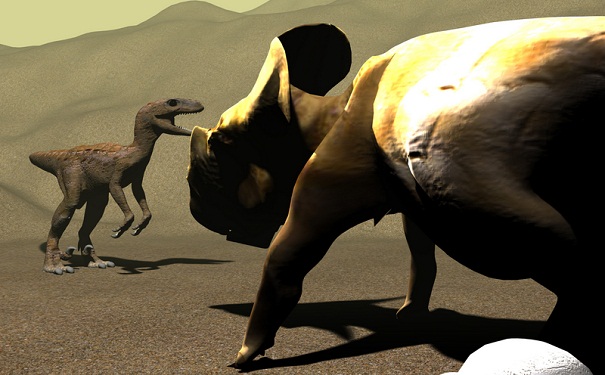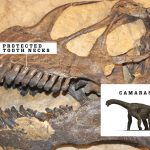
Protocertops had to survive a harsh environment and numerous predators. Image: Shutterstock
A nest containing the fossilised remains of 15 juvenile Protoceratops andrewsi dinosaurs has been found in Mongolia.
Protoceratops are estimated to have grown to a length of 1.8 metres and would have taken up to 10 years to reach their full size. These juveniles, the first to be found for their genus, have shed new light on parental care, as they were likely to have been less than one year old when they died.
The nest, measuring 70 centimetres in diameter, was found in the Djadochta Formation at Tugrikinshire, Mongolia, according to University of Rhode Island palaeontologist David Fastovsky. “Finding juveniles at a nest is a relatively uncommon occurrence, and I cannot think of another dinosaur specimen that preserves 15 juveniles at its nest in this way,” he said.
Fastovsky and his colleagues found that the dinosaur remains, 10 of which were complete, had reached the same level of growth and development and are believed to have come from a single clutch. Their age indicates that they remained in the nest and were cared for by their parents.
The large number of juveniles and the high level of parental care may have been due to the harsh environment and the possibly high mortality rates. Fastovsky calls Protoceratops “a fascinating and unexpected mass of contradictions, as the area the herbivore inhabited would have been a sand sea similar to the Sahara Desert.
A number of theropods, including the Velociraptor, also lived in Mongolia and may have preyed on the Protoceratops. “Juvenile Protoceratops mortality may have been rather high, not only from predation but from a potentially stressful environment, and large clutches may have been a way of ensuring survival of the animals in that setting,” Fastovsky said.
“Nonetheless, if preservation is any indicator of abundance in life, then during the time represented by the Djadochta Formation, Protoceratops were a very common feature of Mongolian Late Cretaceous desert landscapes.”
Fastovsky suspects that the preserved juveniles were rapidly buried by the shifting, accumulating sands that must have constituted the bulk of sedimentation in the area. “Death likely occurred during a desert sandstorm,” he said.
“My guess is that the initial and present-day dryness contributed significantly to the superb preservation, not just of Protoceratops, but of all the fossils from this unit.”
The findings were reported in the Journal of Paleontology.
Source: The University of Rhode Island






